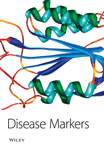Infectious Agents in the Pathogenesis of Primary Biliary Cirrhosis
Abstract
Primary biliary cirrhosis (PBC) is a chronic progressive cholestatic liver disease which is characterized by the breakdown of self-tolerance to the highly conserved pyruvate dehydrogenase complex, specially the pyruvate dehydrogenase E2 complex (PDC-E2). The breakdown of the tolerance to such antigens leads to an autoimmune process characterized by portal inflammation and immune-mediated destruction of the intrahepatic bile ducts. Epidemiological studies have suggested that infections agents can trigger or even exacerbate the disease. Among other gram negative bacteria, Escherichia Coli, and Nosphingobium aromaticivorans are the most associated agents reported hitherto. Epidemiological and molecular evidence points towards molecular mimicry between some components of these microorganisms and specific amino-acid sequences that are present in proteins on normal cells of the biliary tract. In this review, we revisit all reports suggesting that infectious agents might be associated with the autoimmune pathogenesis of PBC. We also retrieve the immune molecular mimicry mechanisms that are likely involved with the autoimmune process in PBC.




